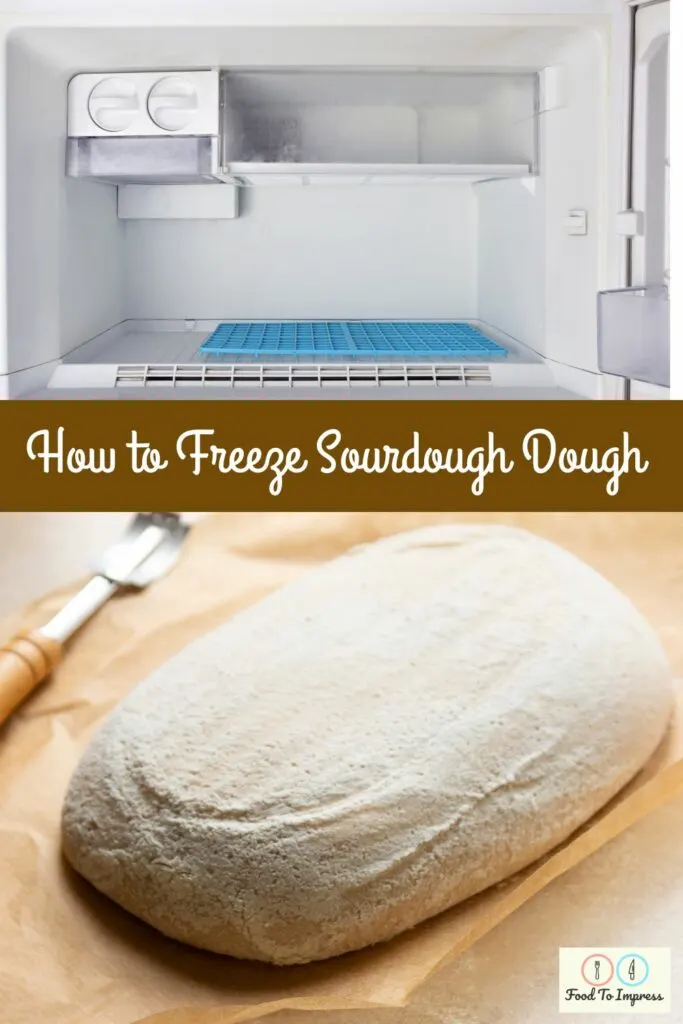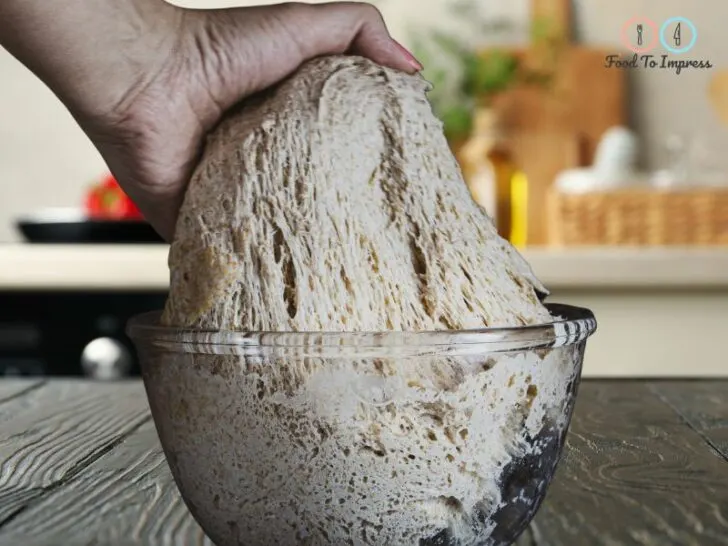Have you ever thought about how to freeze sourdough dough? Freezing sourdough dough is a fantastic way to extend its shelf life and enjoy the tangy flavor of homemade bread whenever you want. This guide will take you through a comprehensive process, from preparation to storage, to ensure your dough’s best quality and taste after freezing.
The quick answer to the question how to freeze sourdough dough is to first ensure that it has gone through its first rise and is properly shaped. Next, wrap the dough in plastic wrap and aluminum foil, then place it in a ziplock bag or airtight container, removing as much air as possible to prevent freezer burn.

Preparation: The Best Way to Freeze Fresh Sourdough
Freezing sourdough dough is a little different than freezing other types of yeast dough. This is primarily because of the wild yeast and bacteria present in the sourdough starter discard. These beneficial microbes contribute to sourdough bread’s health benefits and unique texture, but they can be sensitive to cold temperatures.
The first step is to prepare your dough as per your recipe instructions. Whether you’re making an entire loaf or balls of dough for pizza, ensure your dough has gone through the first rise. For the best results, you can shape your dough before freezing, especially if you’re planning on baking bread. Shaped dough tends to hold its form better than a large batch or ball of dough.
If you’re making pizza dough, consider dividing it into individual balls suitable for one pizza each. Brush each dough ball lightly with olive oil. This prevents freezer burn and keeps the dough from drying out. The dough should be placed in a loaf pan lined with parchment paper if you’re preparing an entire loaf.
If it is too late, and you already have too much bread, check out these ideas for what to do with leftover sourdough bread.
Storing Sourdough Dough in the Freezer: Avoiding Freezer Burn and Extending Shelf Life
Once your dough is shaped and ready, the best way to store it is in sturdy plastic bags or an airtight container. Wrap the dough in plastic wrap first, then place it in a ziplock bag or safe bag specially designed for freezing. Make sure to squeeze out as much air as possible to prevent freezer burn. For the best quality, you can double wrap your dough using aluminum foil after the plastic wrap.
Remember to label your dough with the type of bread and the date of freezing. Even though frozen sourdough dough can last a long time in the freezer, it’s still a good idea to use it within a couple of months for the best taste and texture.
Defrosting Sourdough Dough: A Step-by-step Guide
When you’re ready to bake, the dough needs to be defrosted. This process requires a little time and patience but is relatively straightforward.
Remove the frozen dough from the freezer and transfer it to the refrigerator. For individual pizza balls, this process should be done the night before you plan to use them. For a whole loaf of bread, give it enough time – usually a day or two.
Once the dough is no longer frozen, move it to the counter to continue defrosting at room temperature. The dough will start the second rise or final proof during this time, thanks to the live yeast reactivated by the ambient temperature.
Baking Your Defrosted Dough
After your dough has fully defrosted and undergone its final proof, it’s ready to bake. Follow the same baking instructions as if it were fresh dough. However, keep in mind that you may need to extend the baking time slightly to ensure the middle of the dough reaches the right internal temperature.
For pizza dough, preheat your wood-fired oven or regular oven as per the recipe instructions. The dough should stretch easily and can be topped and baked as usual. Remember, the quality of the dough does not reduce because it was frozen. So, expect a perfect loaf of sourdough bread or a fantastic pizza with a crispy base and a soft inside.
Bonus: How to Freeze Sourdough Bread
Perhaps you’ve baked too much sourdough bread and are wondering how to store the leftovers. Freezing is an excellent option, and sourdough bread freezes particularly well due to its lower moisture content which slows the staling process.
The short answer to “Can you freeze sourdough bread?” is yes. For more detailed instructions, refer to this comprehensive guide on how to freeze sourdough bread.
Additional Tips for Freezing Sourdough Dough
- If you have a small freezer or don’t bake often, consider freezing individual slices of bread or small balls of dough. This way, you can take out just what you need without having to defrost a whole sourdough loaf or a larger batch of dough.
- When using frozen sourdough bread or dough, always remember to allow it enough time to defrost. A rushed defrosting process can lead to a dense and unappetizing final product.
- Frozen dough may not rise as much as fresh dough, particularly if it has been in the freezer for a long time. But this doesn’t mean your bread will be less tasty. Sourdough loaves made from frozen dough still have the distinct sourdough tang and a delightful crumb.
- Always ensure your freezer is at the correct temperature. If the temperature fluctuates, it can cause the dough to partially defrost and refreeze, which can impact the quality of the dough and lead to freezer burn.
Freezing sourdough dough is a great way to preserve the quality of your bread while extending its shelf life. Whether you’re a first-time baker experimenting with a sourdough starter or a seasoned pro looking to manage a large batch of dough, understanding how to freeze sourdough dough can simplify your baking process and ensure you always have access to delicious homemade bread. Plus, the extra cost of energy for freezing is usually offset by the convenience and waste reduction benefits. So go ahead and freeze that dough – your future self will thank you.

